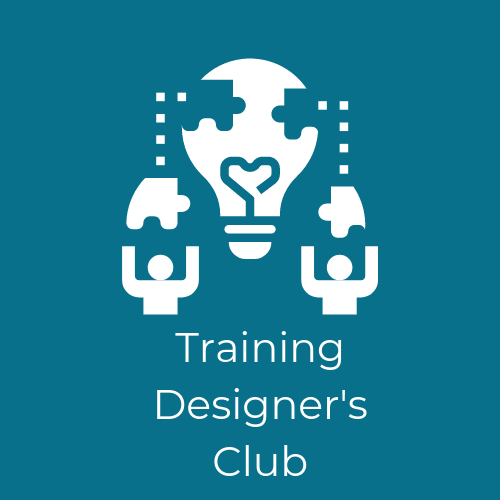I’ve always written training in detail, because when I started in L&D I was part of a team and it was expected that that (with a few exceptions) all of us could deliver everything, and it needed to be consistent between people and over time. As my career moved on, I focused on design rather than delivery so always designed with the expectation that someone other than me would be delivering.
By designing in detail, I mean creating a proper session plan (not just an outline or few notes under slides) and writing out activity instructions and debrief guidelines. Depending on your subject, it also extends to comprehensive delegate materials that can be referred to as a stand-alone resource. Basically, could someone get a clear picture about what your session would cover and how, from your materials alone, or are they meaningless without you there to explain them?
I know that lots of freelance trainers prefer there to be a mystery, to protect their livelihood. But you don’t need to hand everything over – just ask would it make sense if you did? and besides, the materials alone (no matter how good) still need bringing to life with your particular expertise.
The ADDIE model tells us that there are 2 D’s in Training Design: Top line design and detailed development.
So, here’s why should always design your training in detail. even if you are planning to deliver it yourself.
- It’s mental practice. When you design in detail you mentally go through the course in a more detailed way than if you were just planning it. This makes it easier to deliver (OR if you aren’t going to be running it, it allows you to put yourself in the facilitators shoes).
- It’s more realistic. When you actually write everything out, you’re less likely to try and cram too much in as you are listing EVERYTHING that you will cover, not just the top-line topics.
- You can check flow. Can you easily write a sentence that links one section to another? If not, how will you make that link in the training session?
- You can check balance. When you specify exactly where activities will come (and detail the TYPE of activity) it’s easy to see if you need to change pace, add in more variety, or give more (or less) input.
- You can assess your activities. By writing out exactly how you will run activities (and what you hope they will bring out in terms of learning points) you can check they will work before you are live with a group. If there’s any concerns, you can have an alternative ready to go.
- You can check timings. When you write all the things you want to share, the questions you are likely to ask and how activities will be run, it’s much easier to assign realistic timings.
- It cuts your prep time enormously. Even if you run the course 3 years after it was originally written, you can run it within minimal notice. You won’t waste ages wondering what you meant by that comment or which video you are supposed to refer to. It’s all there.
- In time, it cuts your design time. Having detailed session notes that can be adapted will make the design of new sessions easier.
- It gives your key stakeholders confidence. Showing your senior leaders or clients a detailed session plan illustrates that you’ve properly thought it through and won’t just wing it on the day. As much as you may want to be spontaneous and responsive, it still makes most senior people in organisations nervous.
- It allows for substitution. Even if you are freelance, you may need to ask someone to stand in for you at short notice. How can you possibly do that without a detailed session plan?
If you want to develop your training design skills, there are lots of tools to help you on our RESOURCES PAGE including:
- Design Training in 6 Simple Steps (an online course)
- A Practical Guide to designing Training (an ebook)
- 50 Top Tips (a video series)
- How To Guides (24 checklists) – Including one on How to design a session plan
Or you can get personalised support via Design Coaching.
Of course all of these services are included (or discounted) for VIP members of the Training Designer’s Club, who also benefit from supportive discussion groups and regular problem-solving meetings: designer Drop-Ins. Why not join us?
